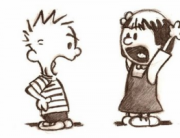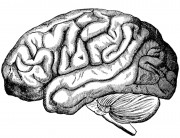 Three of the most meaningful lessons I have ever learned, I learned from a dog. I was sitting outside a local coffee shop and observed a mother, a father, their young daughter, and the family dog take their places at a table. The dog’s eyes were trained intently on a muffin, held in the precarious grip of the toddler. The father instructed the dog to sit, which was completely ignored. The father repeated the instruction with more urgency but it had no more impact than the first attempt. The third attempt was delivered with intensity and volume and harshness, and finally the dog obeyed, slowly sitting on the sidewalk. The father then repeated the process, instructing the dog to lie down. Three times the command was given, with increasing intensity and harshness until finally there was compliance. Finally, after the dog had acquiesced and was lying at the father’s feet, he shouted one last command, for the dog to stay. What he did not notice throughout this process, even when the dog was reluctantly following orders, was that the dog’s eyes never left the muffin. Eventually, when no one was looking, and the muffin was unguarded, it became the dog’s stolen moment of pleasure. Three lessons were reinforced:
Three of the most meaningful lessons I have ever learned, I learned from a dog. I was sitting outside a local coffee shop and observed a mother, a father, their young daughter, and the family dog take their places at a table. The dog’s eyes were trained intently on a muffin, held in the precarious grip of the toddler. The father instructed the dog to sit, which was completely ignored. The father repeated the instruction with more urgency but it had no more impact than the first attempt. The third attempt was delivered with intensity and volume and harshness, and finally the dog obeyed, slowly sitting on the sidewalk. The father then repeated the process, instructing the dog to lie down. Three times the command was given, with increasing intensity and harshness until finally there was compliance. Finally, after the dog had acquiesced and was lying at the father’s feet, he shouted one last command, for the dog to stay. What he did not notice throughout this process, even when the dog was reluctantly following orders, was that the dog’s eyes never left the muffin. Eventually, when no one was looking, and the muffin was unguarded, it became the dog’s stolen moment of pleasure. Three lessons were reinforced:
- Pay attention to what the other person really wants. The dog didn’t want to be difficult, he just wanted the muffin. Instead of just forging ahead in a conflict or relationship, intent on communicating our desires, we would do well to listen once in a while to what it is that the other person truly wants. This applies not only to adult interaction but also to the interplay between parent and child, student and teacher, employer and employee. If the father of this family had noticed that the dog was so intent on tasting the muffin. He might have used it to his advantage to get the dog to follow his commands. He wouldn’t have needed to resort to harshness and intimidation. This leads to the second lesson.
- Look for opportunities to build relationships. All of the research on learning that has been conducted for the last number of decades tells us that the best way to teach good behaviour is through positive reinforcement. When the dog finally gave in to the demands of its owner and sat down, a reward for doing so would have made the next step so much easier for both dog and owner. The man repeatedly missed an opportunity to make his life easier and to teach in a way that would have long term success. All it would have taken was a small bite of muffin or even just a pat on the head, with some affectionate words. The chemical response in the dog’s brain would reinforce the connection between the behaviour and the reward, thereby making it more likely to repeat the pattern in the future.
- The goal is learning, not compliance. The dog finally obeyed as instructed but it never lost focus on what it really wanted, the muffin. As soon as an opportunity presented itself, he took advantage of the lack of attention and returned to non-compliance. What the dog learned through the process, if we look at it in terms of conditioning, is that fake obedience will buy enough time to get an opening to steal what it wants. It was rewarded for doing this and is thereby more likely to do it again in the future. If we bully our way to an interpersonal victory, we may win the battle but we have also set the stage for many battles in the future.
I believe that if we begin to keep these three lessons in mind when we interact with other people, no matter whom the people are, we will not only be more likely to achieve what we want, it will become exponentially easier to do it.


















































Recent Comments